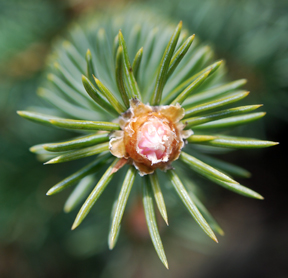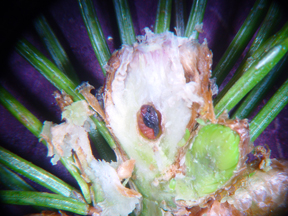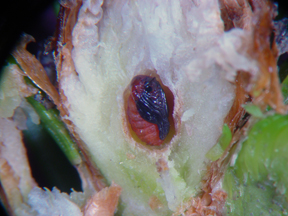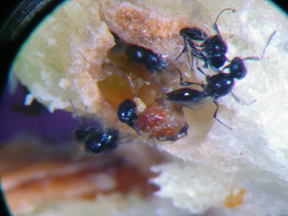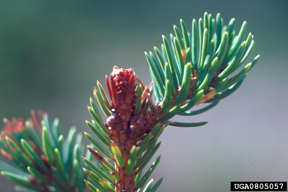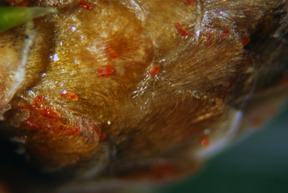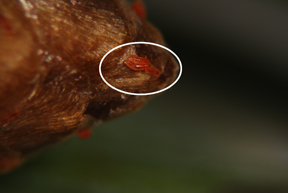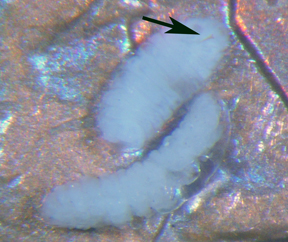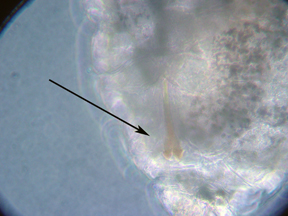Spruce bud midge – A little known pest of white spruce shows up in Michigan
Editor’s note: This article is from the archives of the MSU Crop Advisory Team Alerts. Check the label of any pesticide referenced to ensure your use is included.
While studying the spruce gall midge to determine adult emergence, oviposition and egg hatch (see Jill’s May 1, 2009, article on spruce gall midge), Jill noticed some unusual looking terminal buds on nearby white spruce. These terminal buds had opened slightly, flat across the apex and the bud tissue was whitish-to-pinkish in color rather than the normal green. In the middle of each of these buds Jill found a single tiny fly pupa nestled in a carved out chamber of sorts. Neither of us had run across this insect before. With the help of the Internet and a few reference books, we tentatively identified this pest as the spruce bud midge, Dasineura swainei (Diptera: Cecidomyiidae). The pest is apparently common in Canada and is known to occur in United States, but we’re guessing this is the first time a damaging population has been discovered in Michigan.
According to the Canadian workers, the spruce bud midge primarily attacks the terminal buds of white and black spruce. Attacked buds are killed which results in height loss and distorted growth. According to Gagné (The Plant-Feeding Gall Midges of North America), eggs are laid between the basal scales or needles of elongating shoots in the spring. Larvae move to the tips of the shoots and become embedded in individual chambers. The pink, full grown larvae overwinter in the galls and pupate the following spring. The larva kills the terminal bud, which causes the lateral buds to elongate and grow into multiple leaders resulting in a tree with stunted height and abnormal bushy growth. Gagné gives the distribution as Canadian Maritime Providences to Alberta. Jill’s discovery of this bug is likely a new state record for Michigan.
Several of the buds that Jill sent to the lab showed parasitism that is common with the spruce bud midge. A good portion of the fly pupae had been consumed by a wasp parasitoid. One of the accompanying photos shows at least six wasps developed from a single midge larva.
Spruce gall midge update
Jill reports egg hatch and larval activity this past week.
More strange sightings of cecidomyiid larvae
Charlene Molnar, MSUE Oakland County, sent me a sample of some tiny larvae that a man from Farmington described as “falling by millions out of an oak tree.” Charlene thought they might be gall wasps (Cynipidae). They turned out to be some kind Cecidomyiids midge larvae. Very strange! It has been a Cecidomyiid kind of a week in the lab. I don’t know the who’s, what’s, where’s or how’s of these larvae. Not all Cecidomyiids cause galls to form on plants; many feed on fungi and other yummy things.
Most fly larvae are challenging to identify to family. Cecidomyiid larvae are pretty easy to identify because most have a small, elongate sclerotized plate called a spatula that’s pretty easy to see near the head end of the larva.



 Print
Print Email
Email